
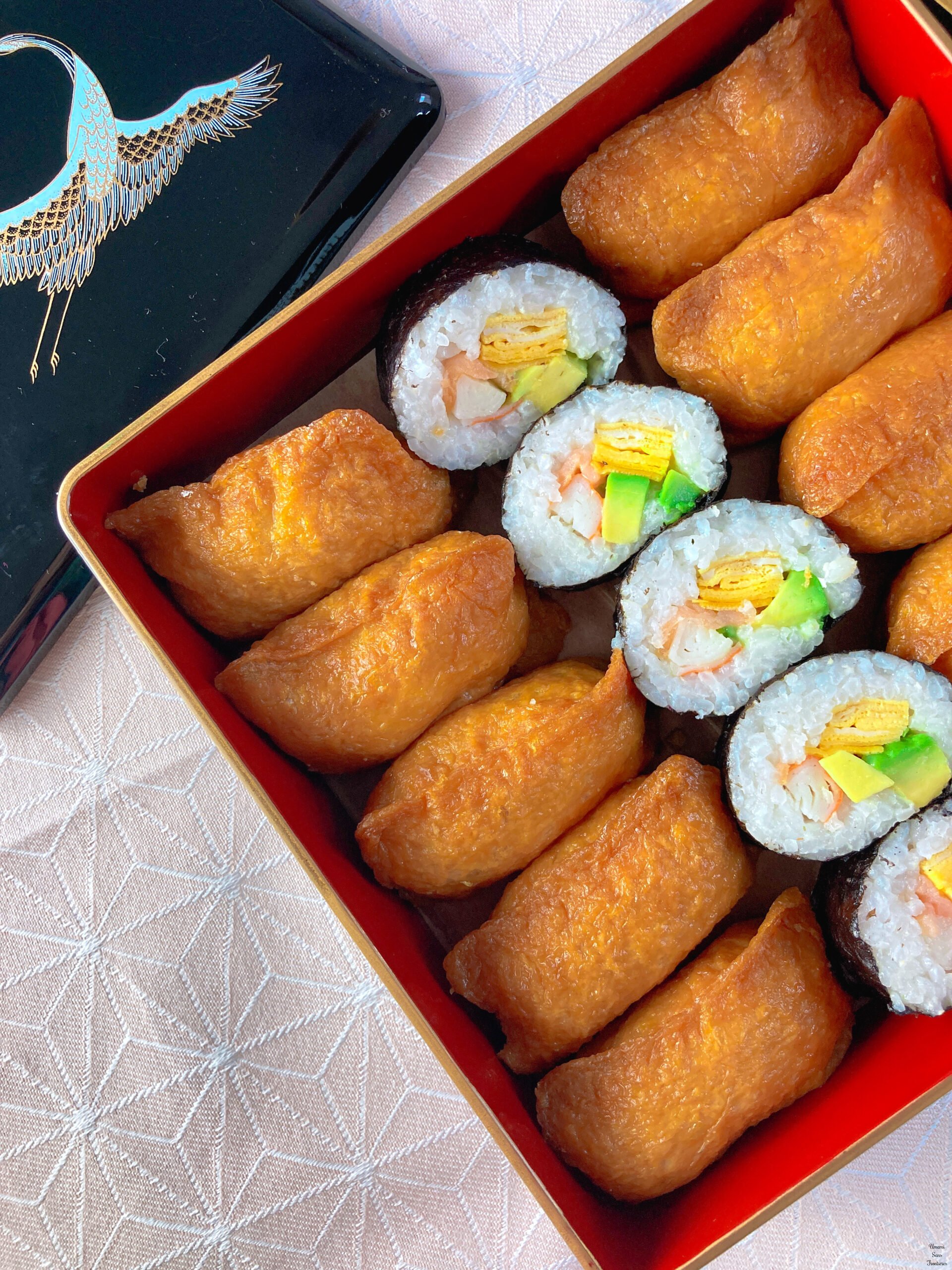

Founder of @Umami Sans Frontières
For 12 pieces of Inari Sushi
● For the Rice
● For the Sushi Vinegar
● Others
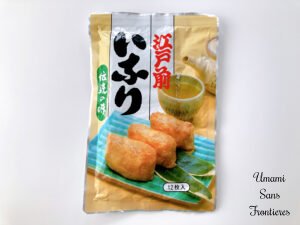
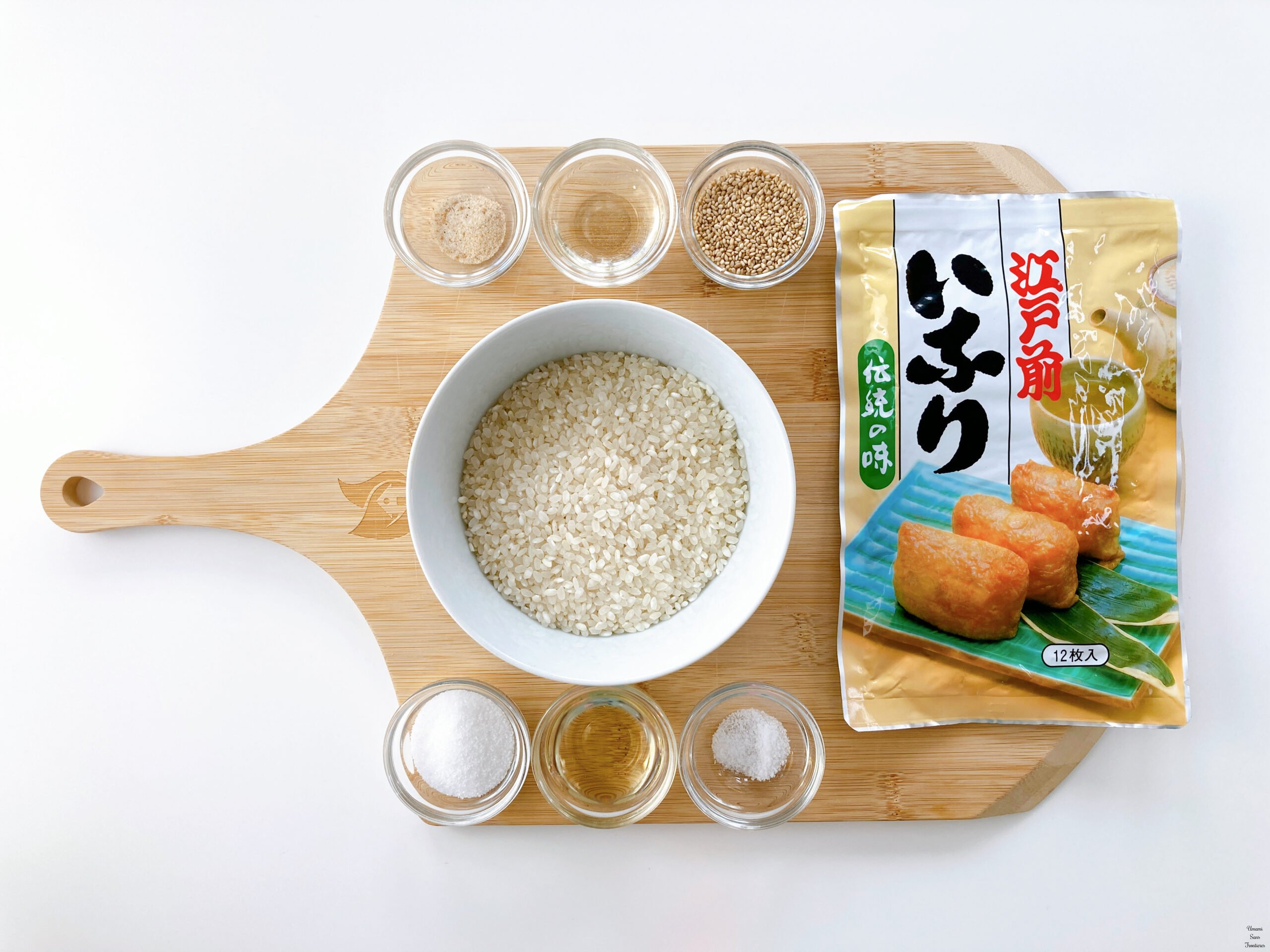
1/ Wash and soak the rice: Rinse the white rice under cold water, gently swirling with your hand, until the water runs clear. Drain well.
Place the rice in a bowl and cover with clean water. Let it soak for about 30 minutes.
Note: Discard the soaking water after 30 minutes.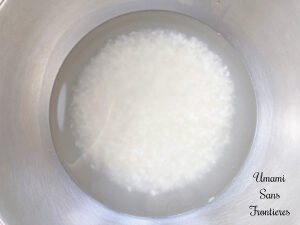
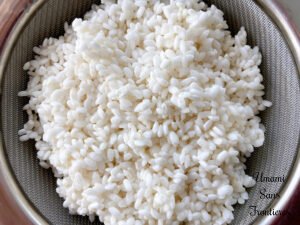
2/ Prepare to cook the rice: Place the soaked rice in the inner pot of a rice cooker (or a regular pot), and add the dashi powder and sake.
Add enough water so that the total amount of liquid (dashi + sake + water) comes to 250–270 ml. Stir gently to combine.
3/ Cook the rice
Note: The amount of water needed may vary depending on the size of your pot and how tightly the lid fits. If the rice is unevenly cooked, you can add a little more water and gently reheat. If it looks like it may burn, reduce the heat to very low.
4/ Mix the sushi vinegar: In a small bowl, combine the vinegar, sugar, and salt. Stir well until the sugar and salt are fully dissolved. Tip: If the sugar doesn’t dissolve easily, you can add a small amount of warm water.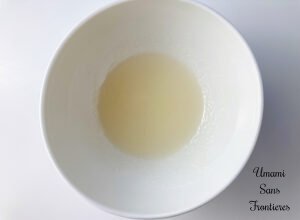
5/ Season the rice: Transfer the cooked rice to a large bowl or wide shallow dish. Gradually add the sushi vinegar, mixing with a rice paddle using a gentle cutting motion.
Once the seasoning is evenly distributed, add the sesame seeds and mix gently.
6/ Warm the inari-age: Following the package instructions, warm the sealed pouch in simmering water for about 5 minutes.
Carefully open the bag with scissors and pour the contents into a strainer set over a bowl to separate the tofu pockets from the seasoning liquid. Let the tofu pockets drain briefly.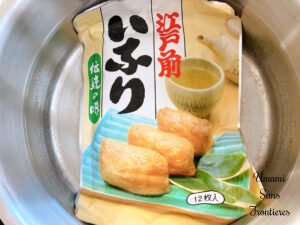
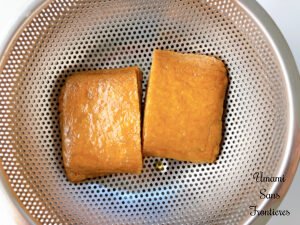
Optional: For a lighter taste, you can rinse the inari-age with hot water to remove excess oil before filling.
7/ Fill the tofu pockets: Divide the sushi rice into 12 equal portions (about 40g each). Lightly moisten your hands with water and gently shape each portion into an oval. Inari-age can tear easily, so open each pocket slowly and carefully from the edge.
Stuff each pocket with rice, then gently press from the outside to shape.
Fold the open edge of the tofu skin over the rice to close the pocket, then turn it seam-side down and place it on a plate. This helps keep its shape and gives a neat, finished look. Ready to serve!
⭐️Inari Sushi Tips⭐️
⭐️ Sushi Rice Add-Ins: This time, we’ve kept it simple with just white sesame seeds, but feel free to mix in your favorites—like finely chopped pickled vegetables, takuan (pickled daikon), or shiso leaves. You can enjoy a variety of flavors depending on what you add!
⭐️ When to Fill the Pockets: It’s best to fill the inari-age while the rice is still slightly warm. If the rice gets too cold, it can be harder to work with and won’t blend as nicely.
⭐️ For Quick Prep: In a hurry? You can simply scoop the rice directly into the tofu pockets using a spoon. Gently press and shape from the outside for a clean and tidy look.
⭐️ Perfect for Bento: Inari sushi tastes great even when cold and is easy to eat with your hands—making it ideal for bento lunches🍱, cherry blossom picnics🌸, and outdoor gatherings🧺.
Planning a spring picnic? Be sure to check out my blog post about Hanami (cherry blossom viewing) for more ideas!
⭐️ Great for Celebrations: It’s also a lovely dish for seasonal events like Hinamatsuri (Girls’ Day) or New Year’s. The golden color and neat shape make it perfect for festive tables.
⭐️ Lovely for Entertaining: Inari sushi is a hit at parties and as a part of casual home entertaining. I’ve made it many times for friends from abroad, and it’s always a big hit—especially with those who enjoy sweet flavors 😄. Kids love it too! 😊
💡 In Our Family: Inari sushi has been one of my personal favorites since I was little, and it’s still a big hit in our home today. In Berlin, it’s hard to find plain abura-age, so I’m really grateful for the convenience of store-bought seasoned inari-age. It makes it easy to enjoy this comforting dish anytime ❤️


Founder of @Umami Sans Frontières